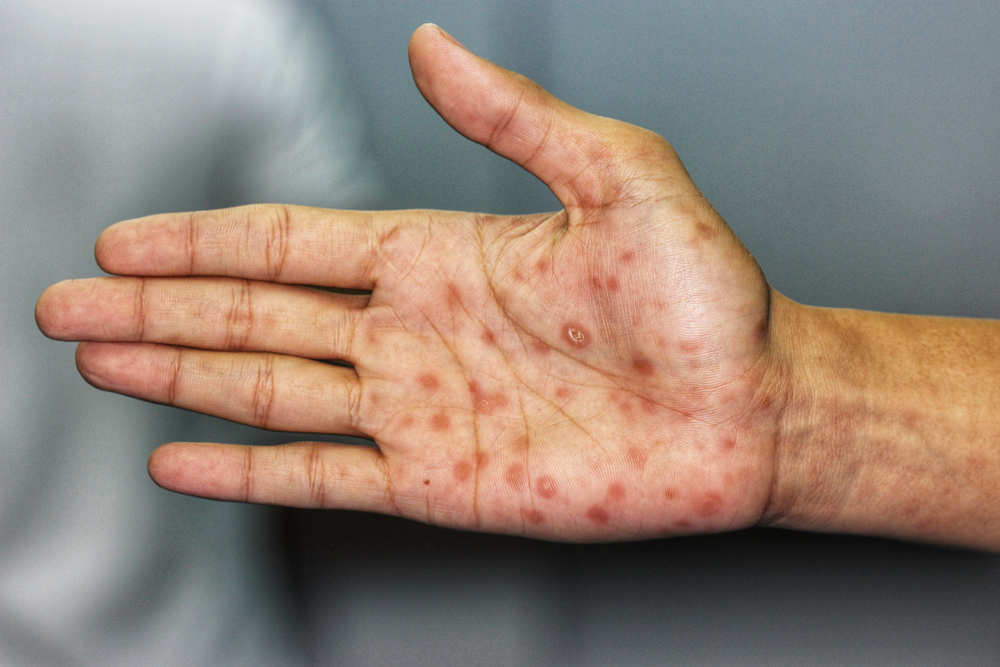Dr. Ted Rosen discusses a newly published US Preventive Services Task Force reaffirmation recommendation statement that says with high certainty that there is significant net benefit to syphilis screening for nonpregnant people who are at increased infection risk.
USPSTF Makes “A” Recommendation to Screen for Syphilis
By Ted Rosen, MD, FAAD
Editor-in-Chief
Syphilis, which is characterized by muco-cutaneous manifestations, continues to increase in incidence in the United States. This recent publication1 reaffirms US Preventive Services Task Force (USPSTF) recommendations regarding indications for syphilis screening.
Using a reaffirmation process, including analysis of the most recent data, the USPSTF concludes with high certainty that there is a substantial net benefit of screening for syphilis infection in nonpregnant persons who are at increased risk for infection.
Those are at highest risk of syphilis are men who have sex with men. The overall rate of primary and secondary syphilis among men who have sex with men was 106 times the rate among men who only have sex with women and 168 times the rate among women.2
Social conditions, such as poverty, lower income and education levels, and less favorable insurance coverage and reduced access to quality health care, which disproportionately affect communities of color, lead to higher rates of syphilis among adolescents and adults who belong to these communities.
Other groups with an increased syphilis risk include younger adults (18 to 24 years); persons with a history of incarceration, sex work, or military service; and individuals who use illicit drugs, particularly methamphetamine
Syphilis screening may be done in the traditional manner (nontreponemal test, such as Venereal Disease Research Laboratory [VDRL] or rapid plasma reagin [RPR] test) followed by confirmatory treponemal test (such as T pallidum particle agglutination [TP-PA]) or via a reverse sequence algorithm. In the latter, an automated treponemal test is performed first (such as ELISA) followed by a nontreponemal test for reactive samples. The traditional screening is more common, but the reverse sequence testing may be more appropriate in areas where populations may be at higher risk for late-stage latent disease, which traditional screening can miss.
Optimal screening frequency for persons at increased risk for syphilis infection is not well established. Men who have sex with men or those who are HIV-positive may benefit from screening at least annually or more frequently (e.g., every 3 to 6 months).
A large Australian cohort study3 is cited which demonstrated that syphilis screening in men who have sex with men was associated with greater detection of early asymptomatic infection and a decrease in secondary syphilis, suggesting that screening is likely to have interrupted the progression of disease.
The USPSTF has also issued a recommendation on behavioral counseling for all sexually active adolescents and for adults who are at increased risk for sexually transmitted infections, or STIs.
References:
- US Preventive Services Task Force, Mangione CM, Barry MJ, Nicholson WK, et al. Screening for Syphilis Infection in Nonpregnant Adolescents and Adults: US Preventive Services Task Force Reaffirmation Recommendation Statement. JAMA. 2022 Sep 27;328(12):1243-1249. doi: 10.1001/jama.2022.15322. PMID: 36166020.
- de Voux A, Kidd S, Grey JA, et al. State-Specific Rates of Primary and Secondary Syphilis Among Men Who Have Sex with Men — United States, 2015. MMWR Morb Mortal Wkly Rep 2017;66:349–354. DOI: http://dx.doi.org/10.15585/mmwr.mm6613a1.
- Chow EPF, Callander D, Fairley CK, Zhang L, Donovan B, Guy R, Lewis DA, Hellard M, Read P, Ward A, Chen MY; ACCESS collaboration. Increased Syphilis Testing of Men Who Have Sex With Men: Greater Detection of Asymptomatic Early Syphilis and Relative Reduction in Secondary Syphilis. Clin Infect Dis. 2017 Aug 1;65(3):389-395. doi: 10.1093/cid/cix326. PMID: 28419198.

